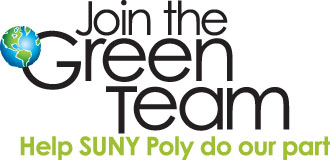 Green Design Strategies
Green Design Strategies
Alternative Transportation
To help in the reduction of carbon emissions this building has been provided with low-emitting and fuel-efficient vehicle parking, bicycle storage and access to changing/ shower rooms.
Stormwater Management
The project was able to mitigate the disruption to natural hydrology by providing on-site infiltration of storm water collected on the roof.
Heat Island Effect
The roofing surface is highly reflective to minimize impact on microclimate and human and wildlife habitat.
Water Efficiency
Water Efficient Landscaping
Outdoor uses of potable water, primarily landscaping, account for 30% of the 26 billion gallons consumed daily in the United States. All landscaping planted on this site requires no irrigation.
Water Use Reduction
Through the use of low flow plumbing fixtures 41% or 335,200 gallons of water per year will be saved.
Energy & Atmosphere
Optimize Energy Performance
Through the use of energy efficient lighting and a solar hot water heating, the building's energy usage has been reduced.
LEED Accredited Professionals on the design and construction team sought ways to exceed the LEED requirements and create a facility that is environmentally friendly while responding to the well-being of building users.
Materials & Resources
Recycled Content, Regional Materials
Where possible, materials used in the construction of this building were made of recycled material and acquired within 500 miles of the site.
Certified Wood
50% of the wood used in the construction of this building is certified by the Forest Stewardship Council. The FSC ensures its members adopt environmentally and socially responsible forest management practices.
Recycle Construction & Demolition Debris
Over 75% of the debris generated during construction was diverted from landfills.
Indoor Environmental Quality
Low-Emitting Materials
Every construction material used on the interior of this building met strict VOC requirements to reduce the quantity of indoor contaminates that are odorous, irritating and/or harmful to the comfort and well-being of installers and occupants.
Daylight & Views
A profusion of natural daylight and views to the exterior are prevalent features of the design. This reduces the need for electric lighting and provides a visual connection to the outdoors from almost every space in the building.

